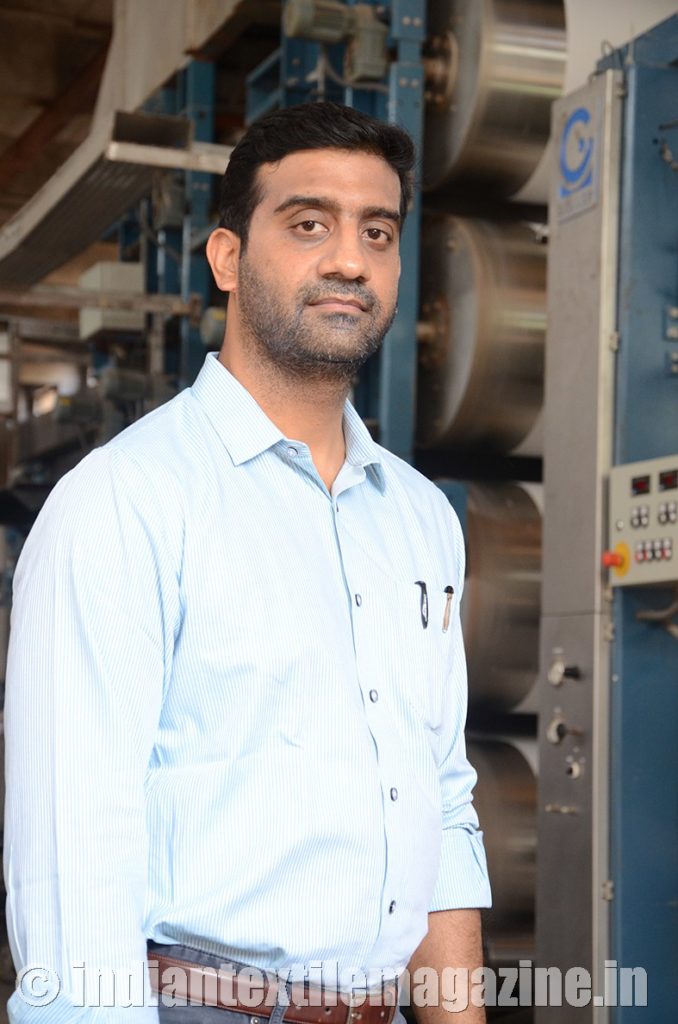Shree Prakash Textile was established in 1969 in a small facility which was predominantly a manufacturing unit that produced simple cambric fabric. Today the company has grown with good returns and business and has a daily production capacity of one lakh meters of cloth. Its main focus of production is on shirting though it is also engaged in production of bed sheets.

Demonetization and GST have impacted the whole economic structure in India. With different views from each player in the industry, one can have a difficult time deciding if this change was for the better or worse. Although some of the segments of the textile sector were not affected much, the processing industry faced a major impact. For one whole year the business went down drastically. Industries had no work as the customers did not have the means to pay for the desired work. In the cash-based industry the cash that was the main medium of business was all of a sudden no longer available. The clouds of uncertainty covered the textile industry in India, the blow of which can still be felt.
Shree Prakash Textile, as a part of the processing industry faced these problems as well. Even after the Diwali season the impact of these two major economic changes did not wear off. People came up with new ideas in the festive season and sold a lot of goods, but due to the lack of cash the business did not pick up. Neither the customers nor the retailers were interested to do business in the prevailing conditions after demonetization and GST as the risk was greater than the returns.
The company is now focusing on the domestic market more as after the impact of GST has narrowed and the demand has increased somehow. Consumption has increased as the people have more buying power as compared to the previous years. Mr. Hashmuk Patel said: “Earlier people used to buy 2 shirts at once which has now increased to 3-4 and it will soon come to 4-8 at a time”.
The company the two production sites – one is devoted to bleaching and printing and the other to dyeing. It has been expanding and modernizing for the past few years. The first of these major expansions was the Zimmer machine for digital printing, the second one being the Goller machine for bleaching, and the third was a continuous mercerizing machine which was bought to further modernize the factories and units of Prakash Textiles. The machines were installed with a perspective to take charge of the production and to provide a means to do all the bleaching at one site. The units are working at full capacity and wash nearly 100 thousand meters of cloth per day.
The fabric manufacturer is a good client of A.T.E. Enterprises Private Ltd. and uses mainly the machines supplied by its principals. It has been associated with A.T.E. for approximately 22 years and has maintained good business relations. Prakash Textiles’ further expansions are in the direction of dyeing bottoms and increasing the quality of products. Mr. Malav Patel said: “In the past we were processing fabric with maximum 250 GLM and now the focus is on 550 GLM.”
The company is involved with producing shirting fabrics for the local retailers and bleaching for Arvind and some other brands and also exports its own digital prints.
Shree Prakash Textile is a brand of quality and has in its possession all the latest technology machinery that many other producers in the market lack. Also owning the Zimmer digital printing machine gives the company an edge over the other printing units in terms of the desired sharpness and the quality of printing. The company has also its lazer exposure for making rotary machines.
The company’s turnover has grown over the years from Rs. 15 crores to Rs. 75 crores per annum. It has increased five times over the years, and as the company sources predict it will generate 20% more turnover in the next five years, at Rs. 100-150 crores per annum. Although due to the lack of space the company does not have any plans for diversifying the home textiles unit which was initially a predominant part of the company and was a source of generating 70% of the turnover, the company will predict to grow in terms of their business and market reach.
The company was previously involved with doing job work mainly for exporting to European countries in bed sheets and curtains, which has changed in recent years as the export market has gone down drastically. Presently the company is focused on the shirting fabric production for local players, as this contributes to 90% of their business and the rest is in bed sheets.
The company has good future prospects and, with the latest technology under its roof, the desired market reach can be achieved. “The performance of the latest Goller machine and the other machines is remarkable and gives us an edge above other market players in this region”, added Mr. Malav Patel.